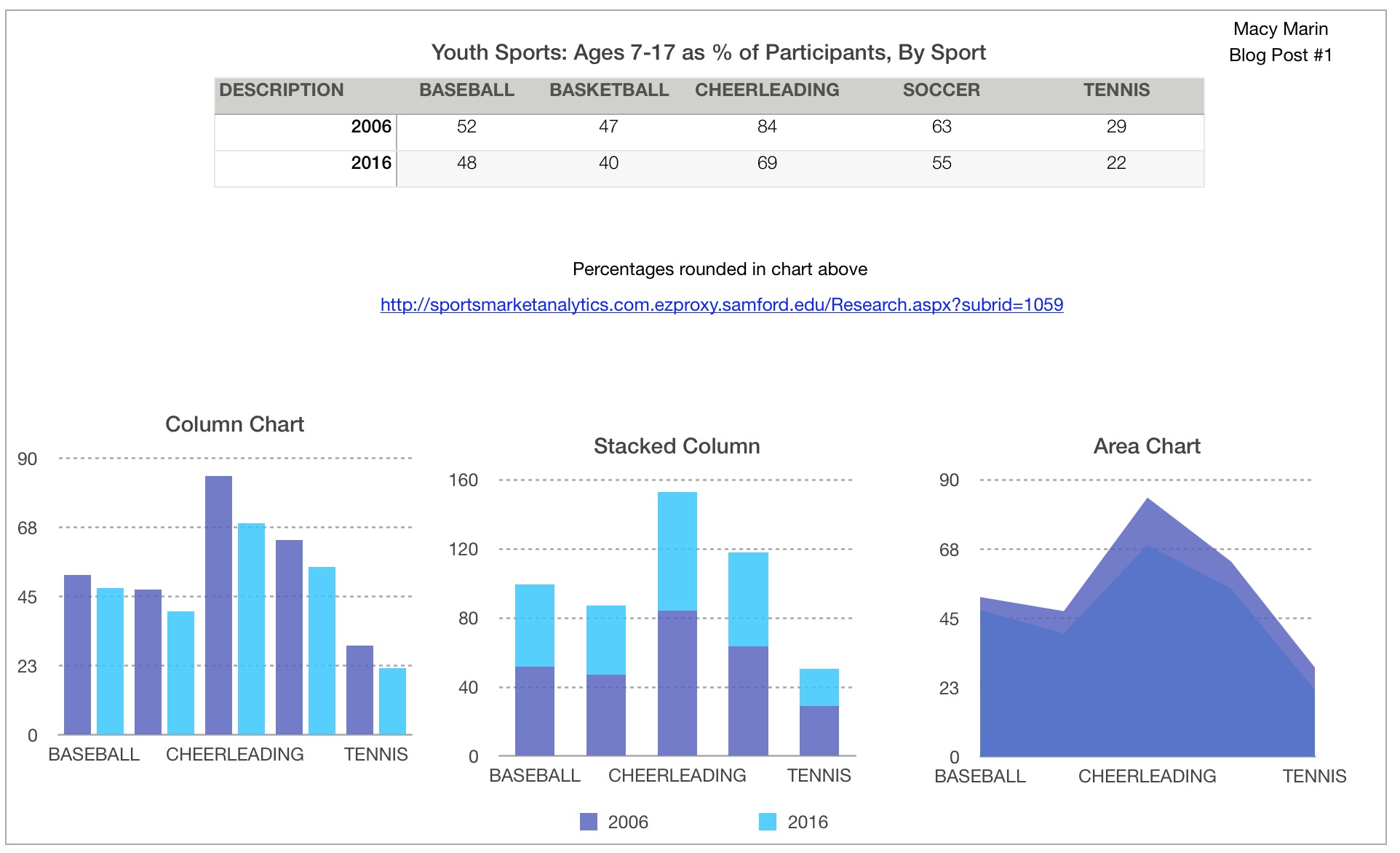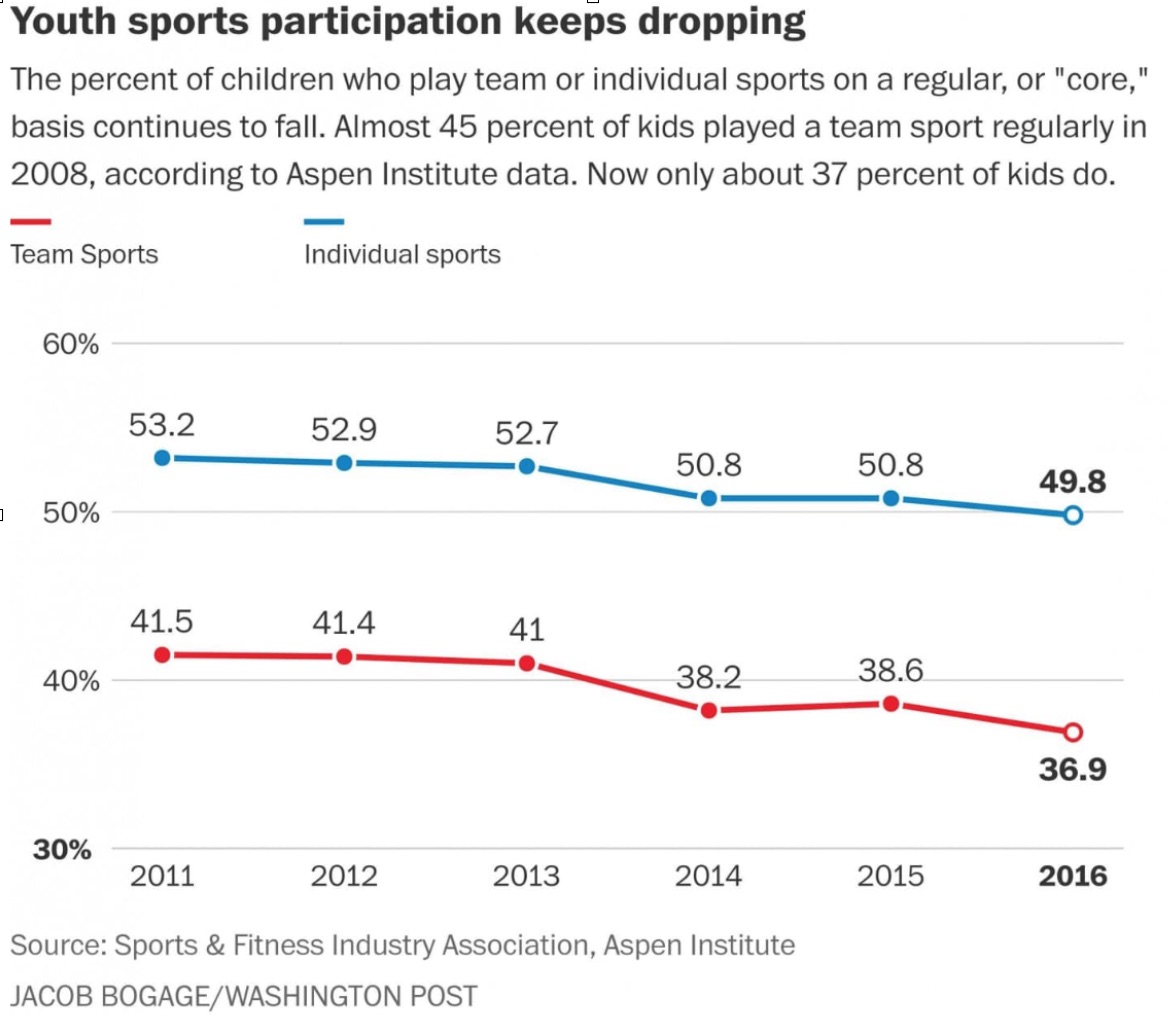The increasing popularity in elite youth travel teams have youth sports facing a decline. Imagine your child wants to play baseball, do you place them in their local recreational league, with volunteer coaches, or on a travel team with trained coaches? Many parents are choosing the popular travel teams, with hopes of their child developing into a star player.
The decision to choose travel ball is causing not only a major decrease in youth sports leagues, but also a major divide. The cost of playing on travel teams have skyrocketed. “Sports in America have separated into sport-haves and have-nots,” said Tom Farrey (@TomFarrey), executive director of Aspen’s Sports & Society program. “All that matters is if kids come from a family that has resources. If you don’t have money, it’s hard to play.”
This divide is turning the middle and lower class families away from youth sports due to not having funds to support their child. The travel teams are turning into a true business. “The cost for parents is steep. At the high end, families can spend more than 10% of their income on registration fees, travel, camps and equipment.” According to WinterGreen Research the U.S. youth-sports industry is now a $15.3 billion market. This includes the travel teams, specialized private coaching, and the organizations that run the travel teams.

Many media companies and businesses are now capitalizing on this industry. Companies are now streaming youth games, creating apps that can market young athletes and schedule their games. Dicks Sporting Goods and NBC have both recently bought companies that build online scheduling, track athletes, and promote them on social media.

On the other side there are still many companies who have seen how the travel team industry has effected youth sports. “Almost 45 percent of children ages 6 to 12 played a team sport regularly in 2008,” according to Aspen data. “Now only about 37 percent of children do.”
The biggest push to stop the decline of youth sports comes from Project Play 2020. This is coordinated by the Aspen Institute’s Project Play, and includes stakeholders such as MLB, the NBA, U.S. Olympic Committee, NBC Sports Group, and Nike. Their goal is to come together to “reverse trends driven largely by a shift away from volunteer and school-based community sports in favor of club-fueled travel sports.”
Project Play has two main goals for their first year: improve training for youth coaches and encourage children to continue playing multiple sports instead of specializing in one. Project Play is hoping that they will make an impact since they are the first coordinated effort in attempting to stop the decline of youth sports.
Jermaine Curtis, Minor League Baseball player, has also stepped up to battle the decline of youth sports. After reading an article explaining that “between 2009 to 2011, $3.5 billion was cut from schools' sports budgets, and an estimated 27 percent of U.S. public high schools will not have any sports by the year 2020 if the current trends continue,” he knew he had to do something. He does not know where he would be today without the game of baseball.
Curtis created “Pros Cave” a program that raises money and awareness to youth sports. He uses social media to interview fellow players and auction off memorabilia to raise money that is then donated to sportsmatter.org. Curtis has now added personal letters to youth athletes to his program and has launched www.ProsCave.com.
The decline of youth sports is a real issue in America, and it is caused by the popularity and growth of elite travel teams. This has caused a new divide in local sports. “There’s been this presumption that youth sports are exploding in this country and private clubs and trainers will pick up the slack,” Farrey said. “For kids with resources, they have. But families without resources are getting left behind.” The business side of travel sports continues to grow, but companies and athletes are coming together to save the youth sports that they love. It will be interesting to see where youth sports will be in 5 years.
 This blog post was written by Samford University student Macy Marin. You can learn more about Macy Marin at LinkedIn
This blog post was written by Samford University student Macy Marin. You can learn more about Macy Marin at LinkedIn
Sources
Bogage, J. (2017, September 6). Youth sports study: Declining participation, rising costs and unqualified coaches. Retrieved from https://www.washingtonpost.com/news/recruiting-insider/wp/2017/09/06/youth-sports-study-declining-participation-rising-costs-and-unqualified-coaches/?utm_term=.834a0e53c112
Feltman, A. (2017, August 24). Jermaine Curtis and Pros Cave Want to Save Youth Sports. Retrieved from https://www.minorleagueball.com/2017/8/24/16195152/jermaine-curtis-pros-cave-want-to-save-youth-sports
Gregory, S. (2017, August 24). How Kids’ Sports Became a $15 Billion Industry. Retrieved from http://time.com/magazine/us/4913681/september-4th-2017-vol-190-no-9-u-s/
Golden , J. (2015, July 29). Youth sports: Kids' athletics are in danger. Retrieved from https://www.cnbc.com/2015/07/29/youth-sports-kids-athletics-are-in-danger.html
King, B. (2017, September 4). Sports stakeholders join forces in effort to stem decline in youth sports participation. Retrieved from http://www.sportsbusinessdaily.com/Journal/Issues/2017/09/04/Marketing-and-Sponsorship/Project-Play.aspx
http://sportsmarketanalytics.com.ezproxy.samford.edu/Research.aspx?subrid=1059
